Friday, June 7th 2019

MSI CEO: AMD Plans to Stop Being the Value Alternative, X570 Motherboards to be Expensive
MSI's CEO Charles Chiang, quoted by Tom's Hardware at COMPUTEX 2019, laid out what we were already seeing with motherboard designs from all vendors of AMD's X570-based motherboards: pricing is likely increasing across the board, and AMD's market positioning won't be of the alternative, lower-value brand.
As quoted, Chiang said that ""Lots of people ask me, what do you think about today's AMD? I say today's AMD is completely different company compared to two, three, five years ago. They have nice technology and they are there to put the higher spec with the reasonable pricing. But right now they say, "Hey Charles, let's push to marketing to the higher [end]. So let's sell higher-pricing motherboards, higher-spec motherboards, and let's see what will happen in the market. So I don't think that AMD is the company that wants to sell low cost here, low cost there." Which does make sense: AMD isn't in the position of the underdog anymore -at least technology and product-portfolio wise when it comes to consumer CPUs. With better products, comes a desire for higher margins, and a change in direction for a company that was basically forced to almost cut itself out of the market in terms of profits with its previous, non-competitive CPU designs.Efforts to survive on AMD's part have been immense, with the company severely tightening its belt in all fields, including R&D, in the times leading to the launch of their previous-gen architecture, Bulldozer. And with the way that one architecture panned out in the market, AMD didn't really find a way to dig itself out of the trenches. No like it has with Zen: a lithe, small, highly efficient design that allowed the company to not only make up lost ground on technology and CPU performance but also on profits. That the company wants to price its products in higher segments, alongside their performance improvements and competitiveness against Intel's slow-moving lineup, makes all sorts of sense from a business perspective.Charles Chiang said that there a multitude of factors contributing to the higher pricing of X570 motherboards: that AMD is planning to charge more for each chipset (compared to the ASMedia-designed X470), but also because of the integration of PCIe 4.0. PCIe 4.0 support has meant a higher-TDp chipset (which has required a throwback to the days of old with active cooling over AMD's chipset, which has increased its TDp up to 10 W compared to the previous gen's X470's 3 W); and because PCIe switches are another best entirely in terms of complexity and power delivery capabilities. All of these add cost, and this cost will end up being passed on to end users (at least partially): as it always is.
Source:
Tom's Hardware
As quoted, Chiang said that ""Lots of people ask me, what do you think about today's AMD? I say today's AMD is completely different company compared to two, three, five years ago. They have nice technology and they are there to put the higher spec with the reasonable pricing. But right now they say, "Hey Charles, let's push to marketing to the higher [end]. So let's sell higher-pricing motherboards, higher-spec motherboards, and let's see what will happen in the market. So I don't think that AMD is the company that wants to sell low cost here, low cost there." Which does make sense: AMD isn't in the position of the underdog anymore -at least technology and product-portfolio wise when it comes to consumer CPUs. With better products, comes a desire for higher margins, and a change in direction for a company that was basically forced to almost cut itself out of the market in terms of profits with its previous, non-competitive CPU designs.Efforts to survive on AMD's part have been immense, with the company severely tightening its belt in all fields, including R&D, in the times leading to the launch of their previous-gen architecture, Bulldozer. And with the way that one architecture panned out in the market, AMD didn't really find a way to dig itself out of the trenches. No like it has with Zen: a lithe, small, highly efficient design that allowed the company to not only make up lost ground on technology and CPU performance but also on profits. That the company wants to price its products in higher segments, alongside their performance improvements and competitiveness against Intel's slow-moving lineup, makes all sorts of sense from a business perspective.Charles Chiang said that there a multitude of factors contributing to the higher pricing of X570 motherboards: that AMD is planning to charge more for each chipset (compared to the ASMedia-designed X470), but also because of the integration of PCIe 4.0. PCIe 4.0 support has meant a higher-TDp chipset (which has required a throwback to the days of old with active cooling over AMD's chipset, which has increased its TDp up to 10 W compared to the previous gen's X470's 3 W); and because PCIe switches are another best entirely in terms of complexity and power delivery capabilities. All of these add cost, and this cost will end up being passed on to end users (at least partially): as it always is.

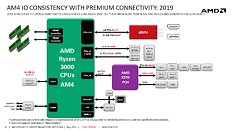
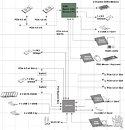
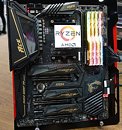
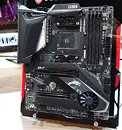
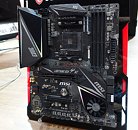
151 Comments on MSI CEO: AMD Plans to Stop Being the Value Alternative, X570 Motherboards to be Expensive
www.anandtech.com/show/2051/12
If AMD loses, their fanbase loses.
If AMD wins, their budget-minded fanbase also loses because they will start charging @ Intel prices (just like they did when they actually had the performance crown with Athlon 64 days).
I also doubt we'll see a 64 core TR if Zen2 REALLY matches Skylake outside of useless CInebench.
I also believe people still prefer budget solutions, judging from the interest in the smaller A- and B- series chipsets, which should signal OEM/ODM/etc. something.
Someone's business strategy may well be a bullet in their foot, if they get too greedy.
For my preference and price range i don't need anything extra, 1x PCI-E x1 for my sound card, and 6 sata connectors and a few USB ports. For those a PCI-E 3.0 capable B550 chip is more than enough i think.
Then again, if those nice mid-X570 boards like the Gigabyte X570 Aorus Pro arrive at around $170~$180, then I think people might make the effort. The VRM/phases on those look really solid, according to Buildzoid.
No matter how you go about backwards compatibility, there'll be those that see it as a boon and others that will see it as a ruse.
You're spot-on about having to pay top-dollar for top-tier products though.
Show some more performance numbers, AMD.